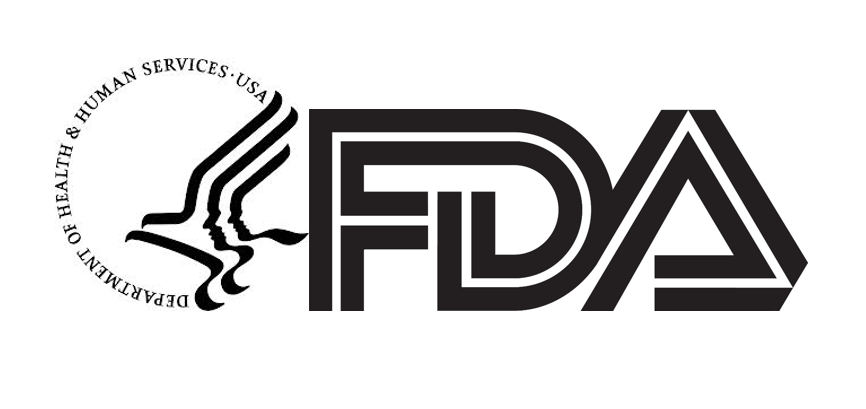Ligandrol, also known as LGD-4033, is a selective androgen receptor modulator (SARM) that is popular among bodybuilders and athletes for its proposed muscle-building effects. It is designed to mimic the therapeutic effects of testosterone while minimizing unwanted side effects, aiming to achieve increased muscle mass and strength with less risk compared to traditional anabolic steroids. Although Ligandrol is marketed for its potential benefits, it’s crucial to understand the side effects and risks associated with its use.
What shall You know about Ligandrol Side Effects? – By selectively binding to androgen receptors in muscle and bone tissue, LGD-4033 is thought to have fewer effects on other organs, which suggests a decreased risk for side effects like those associated with steroids. However, research on the full scope of Ligandrol side effects is still ongoing. Side effects reported in studies and by users include suppression of natural testosterone production, potential liver toxicity, and changes in lipid profiles, which could impact cardiovascular health.
Quick Summary
- Ligandrol, as a SARM, selectively targets muscle and bone androgen receptors with fewer reported side effects.
- LGD-4033 use may lead to testosterone suppression, liver strain, and altered lipid profiles, raising concerns about its safety.
- Although it offers potential muscle-building benefits, the legal and regulatory status of Ligandrol requires careful consideration.
Mechanisms of Action

Ligandrol, or LGD-4033, operates by targeting muscle and bone tissue, engaging with androgen receptors to exert its effects, which are predominantly anabolic. These interactions influence muscle growth and strength without the side effects typically associated with traditional anabolic steroids.
Engagement with Androgen Receptors
Ligandrol is a selective androgen receptor modulator (SARM) that binds with high affinity to androgen receptors, which are proteins located within cells. Its mechanism is selective, as it specifically targets skeletal muscle and bone receptors, which is a contrast to nonselective androgen receptor modulators that affect a broader range of tissues.
- By engaging with these receptors, Ligandrol mimics the effects of testosterone, a natural hormone responsible for the development of male secondary sexual characteristics and the maintenance of muscle mass.
- Selective modulation means that Ligandrol can promote an increase in lean muscle mass and strength with diminished risk of the side effects commonly associated with steroids.
Muscle Building and Anabolic Effects
Ligandrol has been developed to have a strong anabolic effect, which is conducive to muscle building. It is specifically designed to avoid the reproductive organs and focuses on muscle mass and strength enhancement.
- The compound’s ability to selectively target muscle and bone cells allows for a more direct increase in muscle mass and strength, with a reduced likelihood of producing undesirable androgenic effects.
- By binding to the androgen receptors in muscle tissues, Ligandrol stimulates an increase in lean muscle mass, potentially making it beneficial for individuals looking to enhance their muscle composition.
Common Ligandrol Side Effects and Risks

Ligandrol, also known as LGD-4033, is associated with a range of side effects and health risks. These can impact an individual’s hormonal balance, liver health, cardiovascular system, and may lead to other adverse effects.
Suppression of Natural Hormones
Ligandrol has been shown to cause suppression of natural testosterone levels. This can lead to symptoms such as fatigue, reduced libido, and muscle wastage. Testosterone suppression is a significant side effect of Ligandrol use, making post-cycle therapy necessary to help users recover their natural hormone levels.
Impact on Liver Health
LGD-4033 use may elevate liver enzymes, signaling potential liver stress or toxicity. There are concerns regarding liver damage, including hepatotoxicity and jaundice. While some studies suggest that Ligandrol can be safer on the liver compared to more toxic oral steroids, the risk of liver health issues cannot be ignored.
Cardiovascular and Metabolic Concerns
Ligandrol may also influence cholesterol levels negatively, particularly by decreasing HDL cholesterol. This imbalance can potentially lead to an increased risk of heart attacks and other cardiovascular problems. Users should monitor their lipid profiles to manage this risk.
Other Adverse Effects
In addition to hormone suppression and liver stress, Ligandrol can lead to a variety of other side effects including:
- Dry mouth
- Headache
- Water retention
- Gynecomastia
- Hair loss, also known as telogen effluvium
- Acne
It’s important to approach Ligandrol with caution and consult healthcare professionals before use.
Potential Benefits of Ligandrol

Ligandrol (LGD-4033) has gained popularity for its potential in enhancing body composition, primarily through increasing muscle mass and strength. This selectivity makes it a subject of interest for addressing muscle deterioration related to various conditions.
Increases in Muscle Mass
Ligandrol has been highlighted for its ability to promote muscle hypertrophy, a significant increase in lean muscle mass. Clinical studies suggest that even at relatively low doses, LGD-4033 can lead to gains in muscle mass without the corresponding increase in fat tissue.
Enhancements in Strength and Performance
Beyond muscle mass, Ligandrol may contribute to muscle strength and endurance, which is crucial for bodybuilders and athletes. The increase in muscular performance could translate to improved athletic performance across various sports that require strength and endurance.
Potential Therapeutic Applications
LGD-4033 is also being studied for its therapeutic applications in diseases leading to muscle wasting and bone strength decline, such as osteoarthritis, cachexia, and sarcopenia associated with aging. Its ability to improve muscle and bone composition without substantial side effects could be a breakthrough in treating these conditions.
- Muscle-building: Promotes hypertrophy, enhancing lean muscle.
- Bone strength: Positively impacts bone density, potentially beneficial in combating osteoporosis.
- Muscle strength: Leads to increased strength, supporting better physical function.
- Aging: May mitigate age-related muscle loss, improving quality of life in the elderly.
- Muscle wasting conditions: Holds promise for treating cachexia and sarcopenia.
Usage and Dosage Guidelines

Ligandrol, known as LGD-4033, is a selective androgen receptor modulator (SARM) that’s popular for its potential to enhance muscle growth and strength. When using Ligandrol, following specific dosage and cycle guidelines is crucial, as well as understanding the implications of stacking it with other SARMs.
Recommended Dosages
The common daily dosage of Ligandrol is believed to range from 5 mg to 10 mg. First-time users should start at the lower end to assess tolerance. It’s typically taken orally, with each dose lasting around 24 to 36 hours due to its long half-life, meaning once-a-day dosing is sufficient.
Cycle Length and Post Cycle Therapy
A typical cycle of Ligandrol lasts from 6 to 12 weeks. Following this, users should engage in post cycle therapy (PCT). This may include Clomid or Nolvadex to help the body recover its natural testosterone levels. The needed duration and dosage of PCT can vary based on the length of the SARM cycle and the individual’s response.
Combining with Other SARMS (Stacking)
Users sometimes combine Ligandrol with other SARMs to enhance results, a practice known as stacking. However, this increases the risk of side effects, and any stacks should be approached with caution and awareness of the potential added stress on the body. Stacks should be carefully planned, taking into account the half-life and recommended dosages of the accompanying SARMs.
References
Legal and Regulatory Status

Ligandrol, also known as LGD-4033, has a complex legal and regulatory status that varies by jurisdiction, and is closely monitored by anti-doping agencies due to its performance-enhancing effects.
Drug Classification and Legality
LGD-4033 is classified as a Selective Androgen Receptor Modulator (SARM), a class of therapeutic compounds with similar anabolic properties to anabolic steroids but with reduced androgenic properties. As of the current knowledge cutoff date, LGD-4033 is not approved for any medical use by the Food and Drug Administration (FDA), and it is categorized as an investigational drug. Its sale is generally restricted to research purposes and it is not legally available for human consumption.
- Legal Status: Investigational Drug (not FDA approved)
- Availability: Research Chemical (not for human consumption)
Anti-Doping Regulations
The World Anti-Doping Agency (WADA) has prominently listed LGD-4033 as a prohibited substance both in and out of competition. This inclusion signifies a global consensus on Ligandrol being a performance-enhancing drug with potentially significant advantage in sports. Athletes subject to WADA testing may face sanctions if tested positive for SARMs such as LGD-4033.
- WADA Status: Prohibited Substance
- Implications: Positive tests result in athlete sanctions
References
- World Anti-Doping Agency Prohibited List: https://www.wada-ama.org
- Food and Drug Administration on Investigational Drugs: https://www.fda.gov
Frequently Asked Questions

Carefully chosen information responds to frequently asked questions about Ligandrol (LGD-4033), addressing concerns ranging from potential carcinogenicity and liver health impact to usage, dosage, combination with testosterone, and onset of effects.
What are the potential risks associated with Ligandrol in terms of carcinogenicity?
Research into the carcinogenic risk of Ligandrol is ongoing. As it is a relatively new compound, long-term data are not yet sufficient to conclusively determine its potential to cause cancer.
Can Ligandrol LGD-4033 impact liver health, and if so, how?
There are indications that Ligandrol can cause a temporary increase in liver enzymes, which may suggest liver strain. These effects appear to be reversible upon discontinuation.
What changes might one expect after using Ligandrol LGD-4033?
Users may experience increased muscle mass and strength. However, as an unapproved drug with risks, there may also be side effects such as fatigue, headaches, and hormone imbalances.
How should Ligandrol LGD-4033 be dosed for optimal results?
Optimal dosing for Ligandrol is not medically established. Anecdotal evidence suggests varied dosing, but without clinical backing, determining a universally “optimal” dose is speculative.
Can Ligandrol LGD-4033 be safely combined with testosterone?
There is limited research on the safety of combining Ligandrol with testosterone. Users of anabolic agents often combine substances to potentiate effects, despite potential health risks.
How quickly can one anticipate experiencing effects after starting Ligandrol LGD-4033?
Effects may be noted within several weeks of starting Ligandrol. The timeline can vary based on individual factors like dosage, diet, and exercise routines.
References
Dr. Grant Fourie, a specialist in male hormones, is based in Cape Town, South Africa. He provides comprehensive treatments for conditions related to low testosterone, such as erectile dysfunction, fatigue, and mood changes. His methods include hormone replacement therapy and other modern treatment options.
Contact me via email or phone to book personal appointment in my clinic: The Village Square, Cape Town - South Africa



